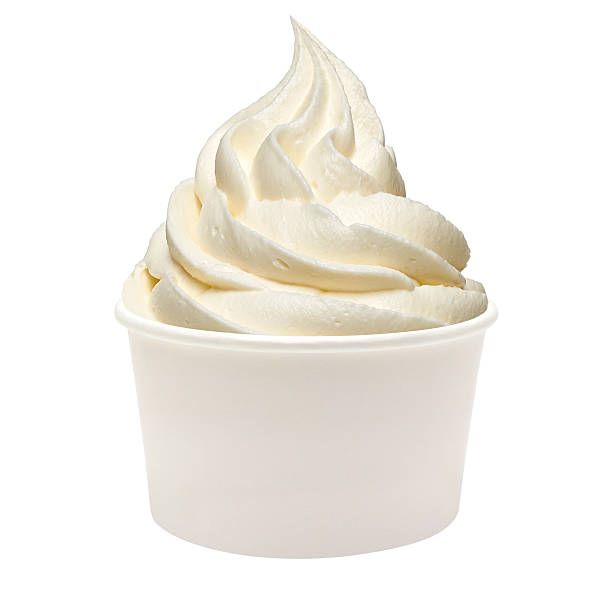Next we should import some data.
 |
 |
 |
|---|---|---|
| Mini cup | Standard Cornet | Big cone |
This example is adapted from Chapter 1 of Pirates, Peaches and p-values
Today we will try plotting some data of different measurement types and try to understand when the different plots are informative and what they tell us about how the data is distributed
We will examine how we can use descriptive statistics to describe the distribution. In particular, how can we qunatify a typical value? And how can we quantify how much the distribution deviates from these typical values?
First we will import some modules that we will use...
import numpy as np
from matplotlib import pyplot as plt
import pandas as pd
Next we should import some data.
 |
 |
 |
|---|---|---|
| Mini cup | Standard Cornet | Big cone |
This example is adapted from Chapter 1 of Pirates, Peaches and p-values
url = 'https://piratepeel.github.io/GlobalStudiesQuantMethodsS1/data/ice_cream_sales.csv'
iceCreamData = pd.read_csv(url)
iceCreamData.head(10)
| Flavour | Cone | Temperature | Scoops | |
|---|---|---|---|---|
| 0 | peach | giant cone | -0.4 | 3 |
| 1 | vanilla | mini cup | -2.2 | 1 |
| 2 | vanilla | giant cone | -2.0 | 4 |
| 3 | peach | standard cornet | 0.4 | 2 |
| 4 | peach | standard cornet | -1.9 | 2 |
| 5 | peach | mini cup | -1.4 | 2 |
| 6 | chocolate | standard cornet | -2.8 | 3 |
| 7 | peach | standard cornet | -2.5 | 2 |
| 8 | peach | giant cone | -0.3 | 8 |
| 9 | vanilla | standard cornet | -1.4 | 3 |
First we will choose the column that is measured as a nominal scale and plot it using a pie chart and a bar chart.
# Count the occurrences of each category in the 'Category' column
category_counts_f = iceCreamData['Flavour'].value_counts()
# Create a pie chart
category_counts_f.plot(kind='pie', autopct='%1.1f%%')
# Adding a title
plt.title('Pie Chart of Flavour Distribution')
# Remove the x and y-label
plt.xlabel('')
plt.ylabel('')
# Display the chart
plt.axis('equal') # Equal aspect ratio ensures that the pie chart is circular.
(-1.1129928317635196, 1.1006187320057477, -1.1006187372479035, 1.1129928321258653)
# Count the occurrences of each category in the 'Category' column
category_counts_f = iceCreamData['Flavour'].value_counts()
# Create a bar chart
category_counts_f.plot(kind='bar')
# Adding labels and title
plt.xlabel('Flavours')
plt.ylabel('Count')
plt.title('Count of Categories')
Text(0.5, 1.0, 'Count of Categories')
# Count the occurrences of each category in the 'Category' column
category_counts_c = iceCreamData['Cone'].value_counts()
# Create a pie chart
category_counts_c.plot(kind='pie', autopct='%1.1f%%')
# Adding a title
plt.title('Pie Chart of Cone Distribution')
# Remove the x and y-label
plt.xlabel('')
plt.ylabel('')
# Display the chart
plt.axis('equal') # Equal aspect ratio ensures that the pie chart is circular.
(-1.1000000009884476, 1.100000020757401, -1.1129928306484105, 1.1006187062213528)
# Count the occurrences of each category in the 'Category' column
category_counts_c = iceCreamData['Cone'].value_counts()
# Create a bar chart
category_counts_c.plot(kind='bar')
# Adding labels and title
plt.xlabel('Cone')
plt.ylabel('Count')
plt.title('Count of Categories')
Text(0.5, 1.0, 'Count of Categories')
category_counts_c
standard cornet 5 giant cone 3 mini cup 2 Name: Cone, dtype: int64
To change the order of the bars, we need to do 2 simple things:
# Get the counts of each category
values = df['category'].value_counts()
# Define the desired order of categories
desired_order = ['Group1', 'Group2', 'Group3'] # Change this order as needed
values = values.reindex(desired_order) # Reindex the values in the desired order
The create the plot as usual.
Note that if the index values are numbers (float or int) then we automatically sort them
desired_order = category_counts.index.sort_values()
However, ordering a numbered index does not work well with a bar chart!
# Define the desired order of categories
desired_order = ['mini cup', 'standard cornet', 'giant cone'] # Change this order as needed
category_counts_c = category_counts_c.reindex(desired_order) # Reindex the values in the desired order
category_counts_c
mini cup 2 standard cornet 5 giant cone 3 Name: Cone, dtype: int64
# Create a bar chart
category_counts_c.plot(kind='bar')
# Adding labels and title
plt.xlabel('Cone')
plt.ylabel('Count')
plt.title('Count of Categories')
Text(0.5, 1.0, 'Count of Categories')
# Count the occurrences of each category in the 'Category' column
category_counts_t = iceCreamData['Temperature'].value_counts()
# Create a pie chart
category_counts_t.plot(kind='pie', autopct='%1.1f%%')
# Adding a title
plt.title('Pie Chart of Temperature Distribution')
# Remove the x and y-label
plt.xlabel('')
plt.ylabel('')
# Display the chart
plt.axis('equal') # Equal aspect ratio ensures that the pie chart is circular.
(-1.1000000056491936, 1.100000010561534, -1.100000007859747, 1.1000000029474057)
# I don't need to calculate the counts again I already
# did it in the cell above
# Create a bar chart
category_counts_t.plot(kind='bar')
# Adding labels and title
plt.xlabel('Temperature')
plt.ylabel('Count')
plt.title('Count of Tempertures')
Text(0.5, 1.0, 'Count of Tempertures')
Observation: The pie chart does not tell us much because we lose the order. The bar chart is also not very informative because we lose the interpretation of the intervals.
# Create a histogram
iceCreamData['Temperature'].plot(kind='hist', bins=3, edgecolor='black', alpha=0.7)
# Adding labels and title
plt.xlabel('Temperature')
plt.ylabel('Frequency')
plt.title('Temperature Distribution Histogram')
Text(0.5, 1.0, 'Temperature Distribution Histogram')
How many bins should I use? Perhaps 3? 5, 10, 25?
# Count the occurrences of each category in the 'Category' column
category_counts_s = iceCreamData['Scoops'].value_counts()
# Create a pie chart
category_counts_s.plot(kind='pie', autopct='%1.1f%%')
# Adding a title
plt.title('Pie Chart of Scoops Distribution')
# Remove the x and y-label
plt.xlabel('')
plt.ylabel('')
# Display the chart
plt.axis('equal') # Equal aspect ratio ensures that the pie chart is circular.
(-1.1129928313852615, 1.1006187216952246, -1.1008152309433816, 1.1171195796322744)
# I don't need to calculate the counts again I already
# did it in the cell above
# Create a bar chart
category_counts_s.plot(kind='bar')
# Adding labels and title
plt.xlabel('Scoops')
plt.ylabel('Count')
plt.title('Count of Scoops')
Text(0.5, 1.0, 'Count of Scoops')
# Create a histogram
iceCreamData['Scoops'].plot(kind='hist', bins=5, edgecolor='black', alpha=0.7)
# Adding labels and title
plt.xlabel('Scoops')
plt.ylabel('Frequency')
plt.title('Temperature Distribution Histogram')
Text(0.5, 1.0, 'Temperature Distribution Histogram')
The mode is the value that occurs most often.
What is the mode for each of the variables:
The median is the value that lies in the middle if we order the values from lowest to highest. 50% of the values lie below and 50% lies above.
What is the median for each of the variables:
middle_values = np.sort(iceCreamData['Temperature'].values)[4:6]
np.mean(middle_values)
-1.65
np.median(iceCreamData['Temperature'])
-1.65
np.percentile(iceCreamData['Temperature'], 50)
-1.65
We calculate the mean by adding up all the values and dividing by the total number of values
What is the mean for each of the variables:
np.sum(iceCreamData['Flavour'])
'peachvanillavanillapeachpeachpeachchocolatepeachpeachvanilla'
np.sum(iceCreamData['Temperature'])/10
-1.4500000000000002
meanScoops = np.sum(iceCreamData['Scoops'])/10
print(f'The mean number of scoops is {meanScoops}')
The mean number of scoops is 3.0
With quantitative data, a natural question is how much do the values in the data vary? How large is the dispersion or spread of the data?
For instance, do all customers buy more or less the same amounts of ice cream or does the amount of ice cream vary a lot from customer to customer?
First let's look at how much the values deviate from the mean value...
# if all the values are the same then the difference
# from the mean is zero for all purchases
np.ones(10)*3 - meanScoops
array([0., 0., 0., 0., 0., 0., 0., 0., 0., 0.])
# when people buy different amounts of ice cream
# we see that we have different distances from the mean
differenceFromTheMean = iceCreamData['Scoops'].values - meanScoops
differenceFromTheMean
array([ 0., -2., 1., -1., -1., -1., 0., -1., 5., 0.])
# when we sum these differences, however, we always get zero
# this is because all the differences cancel each other out
np.sum(differenceFromTheMean)
0.0
differenceFromTheMean * differenceFromTheMean
array([ 0., 4., 1., 1., 1., 1., 0., 1., 25., 0.])
squaredDifference = np.square(differenceFromTheMean)
squaredDifference
array([ 0., 4., 1., 1., 1., 1., 0., 1., 25., 0.])
# this is the mean of the squared difference from the mean
# also called variance
variance = np.sum(squaredDifference)/10
variance
3.4
np.sqrt(variance)
1.8439088914585775
np.sqrt(np.sum(np.square(iceCreamData['Scoops'].values - np.mean(iceCreamData['Scoops'])))/10)
1.8439088914585775
The customer that bought 8 scoops is quite unusual. We might consider this value to be an outlier.
url = 'https://piratepeel.github.io/GlobalStudiesQuantMethodsS1/data/ice_cream_sales_no_outlier.csv'
iceCreamData_noOutlier = pd.read_csv(url)
iceCreamData_noOutlier.head(10)
| Flavour | Cone | Temperature | Scoops | |
|---|---|---|---|---|
| 0 | peach | giant cone | -0.4 | 3 |
| 1 | vanilla | mini cup | -2.2 | 1 |
| 2 | vanilla | giant cone | -2.0 | 4 |
| 3 | peach | standard cornet | 0.4 | 2 |
| 4 | peach | standard cornet | -1.9 | 2 |
| 5 | peach | mini cup | -1.4 | 2 |
| 6 | chocolate | standard cornet | -2.8 | 3 |
| 7 | peach | standard cornet | -2.5 | 2 |
| 8 | peach | giant cone | -0.3 | 4 |
| 9 | vanilla | standard cornet | -1.4 | 3 |
np.mean(iceCreamData['Scoops'])
3.0
np.mean(iceCreamData_noOutlier['Scoops'])
2.6
np.median(iceCreamData['Scoops'])
2.5
np.median(iceCreamData_noOutlier['Scoops'])
2.5
np.sort(iceCreamData['Scoops'])
array([1, 2, 2, 2, 2, 3, 3, 3, 4, 8])
np.sort(iceCreamData_noOutlier['Scoops'])
array([1, 2, 2, 2, 2, 3, 3, 3, 4, 4])
scoops75 = np.percentile(iceCreamData['Scoops'], 75)
scoops25 = np.percentile(iceCreamData['Scoops'], 25)
scoops75 - scoops25
1.0
scoops75 = np.percentile(iceCreamData_noOutlier['Scoops'], 75)
scoops25 = np.percentile(iceCreamData_noOutlier['Scoops'], 25)
scoops75 - scoops25
1.0